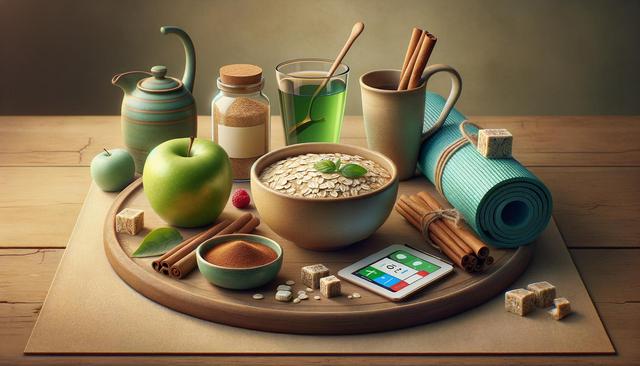Understanding the Importance of Blood Sugar Control
Maintaining healthy blood sugar levels is essential for overall health, especially for individuals managing conditions such as type 2 diabetes or insulin resistance. High blood sugar, also known as hyperglycemia, can lead to a range of complications if left unchecked, including nerve damage, kidney issues, and cardiovascular problems. By understanding how food and lifestyle choices influence glucose levels, you can take proactive steps toward better health. One of the most accessible ways to begin is by making adjustments to your daily routine and diet at home.
Key factors influencing blood sugar include carbohydrate intake, physical activity, stress levels, and sleep quality. Creating a balanced approach that addresses each of these areas can lead to sustained improvements. Incorporating home remedies and natural recipes into your routine can be a practical and effective way to support this process consistently.
Herbal Teas and Natural Drinks for Sugar Balance
Certain herbal teas and homemade beverages can aid in blood sugar management thanks to their natural properties. These drinks are easy to prepare at home and offer a comforting way to support your health throughout the day. One popular choice is cinnamon tea, known for its potential to improve insulin sensitivity. Simply steep a cinnamon stick in hot water for 10–15 minutes and enjoy it once or twice daily.
Other beneficial drinks include:
- Fenugreek seed water – Soak a tablespoon of fenugreek seeds overnight and drink the water first thing in the morning.
- Bitter melon juice – Blend bitter melon with water and strain to drink a small glass daily.
- Ginger tea – Fresh ginger boiled in water can help reduce inflammation and support metabolic health.
These drinks work best when paired with a balanced diet and regular physical activity. It’s important to monitor how your body responds and consult your healthcare provider if you’re taking medication, as these natural remedies may interact with your treatment plan.
Home-Cooked Meals That Support Healthy Glucose Levels
Cooking at home gives you full control over your ingredients, making it easier to manage sugar and carbohydrate intake. Focus on meals rich in fiber, lean protein, and healthy fats to create a steady release of energy and prevent blood sugar spikes. For example, a stir-fry made with broccoli, leafy greens, tofu or chicken, and olive oil is both satisfying and blood sugar-friendly.
Other meal ideas include:
- Quinoa salad with chickpeas, cucumbers, and a lemon-olive oil dressing
- Whole grain oats topped with chia seeds, cinnamon, and a few berries
- Baked salmon with steamed vegetables and a side of lentils
Using low-glycemic index (GI) foods is also beneficial. These include non-starchy vegetables, legumes, nuts, and whole grains. Avoid refined sugars and processed carbohydrates, which can cause abrupt increases in blood glucose levels.
Daily Habits That Help Regulate Blood Sugar
Beyond diet, several lifestyle habits can positively impact how your body manages glucose. Daily physical activity, even in moderate forms like walking or gardening, helps your muscles use glucose more efficiently. Aim for at least 30 minutes of movement most days of the week.
In addition to exercise, consider the following habits:
- Stay hydrated – Drinking enough water helps kidneys flush out excess sugar.
- Get consistent sleep – Poor sleep can affect insulin sensitivity and appetite regulation.
- Manage stress – Mindfulness practices such as meditation or deep breathing can reduce cortisol levels that may otherwise affect blood sugar.
Consistency is key. Forming small, sustainable habits over time tends to be more effective than drastic changes that are hard to maintain. Set realistic goals and celebrate progress, no matter how small.
Monitoring and Adjusting Your Approach
Tracking your progress is an important part of maintaining healthy blood sugar levels. Home glucose monitors can provide real-time feedback and help you understand how your body reacts to different foods and activities. Keeping a daily log of meals, physical activity, and glucose readings can reveal patterns and inform adjustments.
As you explore natural techniques and home recipes, remember that individual responses can vary. Factors such as age, activity level, and existing health conditions all play a role. It’s wise to review your approach regularly and seek professional guidance when needed.
Home-based strategies are not a substitute for medical care but can complement a broader plan for managing blood sugar. With a thoughtful and consistent approach, you can create a home environment that supports your health goals.




Leave a Reply